By SERGEY KADINSKY
Forgotten NY correspondent
This city has more college campuses than any other in the nation. On our previous campus sojourns, we visited CCNY, the Hall of Fame at Bronx Community College, Lehman College, Kingsborough Community College, SUNY Maritime, and Queensborough Community College.
Every college campus in the city has some remnant of its pre-academic past. At Queensborough, the former golf clubhouse is now an art gallery. At Columbia University, Buell Hall is the last reminder of the Bloomingdale Insane Asylum. SUNY Maritime is a former fortress. Now it’s time to visit the home of the Red Storm, the city’s leading collegiate sports program.
Like Queensborough, nearby St. John’s University also occupies a former golf course, Hillcrest Golf Club, which operated from around 1920 to 1954. Finding remnants of the campus’ past was more difficult here, but along the way there are a few noteworthy structures.
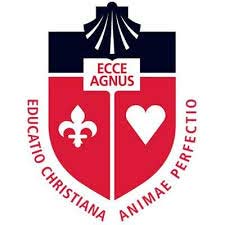
 St. John’s had its start as a college in 1870 in the Bed-Stuy neighborhood of Brooklyn, at the corner of Lewis Avenue and Hart Street. On that block, the Church of St. John the Baptist at 75 Lewis Avenue shares the university’s namesake. The school on that block, New Beginnings Charter School occupies a Gothic revival structure that was used by St. John’s Prep High School until 1972, when it relocated to Astoria.
St. John’s had its start as a college in 1870 in the Bed-Stuy neighborhood of Brooklyn, at the corner of Lewis Avenue and Hart Street. On that block, the Church of St. John the Baptist at 75 Lewis Avenue shares the university’s namesake. The school on that block, New Beginnings Charter School occupies a Gothic revival structure that was used by St. John’s Prep High School until 1972, when it relocated to Astoria.

In Queens, the future campus was once farmland located atop the glacial terminal moraine ridge that is now the neighborhoods of Briarwood, Jamaica Hills, Hillcrest, Jamaica Estates, and Holliswood. In 1909 landowner William F. Wyckoff mapped his property as the Hillcrest of Jamaica development.

At the same time, a golf course was also slated for the site. It opened in 1924, designed by Devereux Emmett, whose other works include Bethpage State Park and the former Pomonok Country Club.

In the year that the golf course opened, much of eastern Queens was still rural but by 1951, the green space was entirely enveloped by identical rows of postwar tract housing.
The golf club had been under the ownership of St. John’s University since 1936 but the Great Depression and the Second World War delayed the construction of the new campus. Ground was broken at the site on February 11, 1954. By 1956, the number of private golf clubs in Queens had declined from 16 two decades earlier to three as urbanization encroached. Today, there are none.
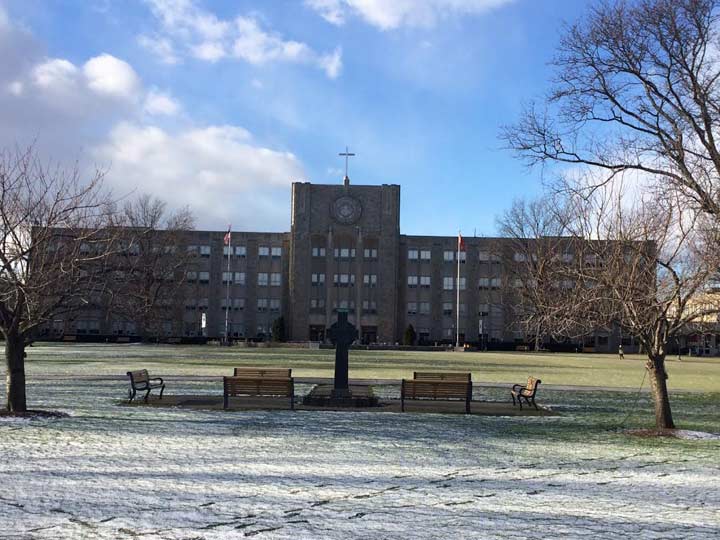
The first buildings on campus were constructed within the crescent loop former by University Road, which circles around the hilltop in the center of the campus. Long after Collegiate Gothic had fallen out of favor among the architects of academia, facilities such as St. Augustine Hall and St. John Hall celebrate the style with gray stones and arches. Adapted to modernism, they also have repetitive rows of windows and fewer decorative features that older Collegiate Gothic campuses such as CCNY.
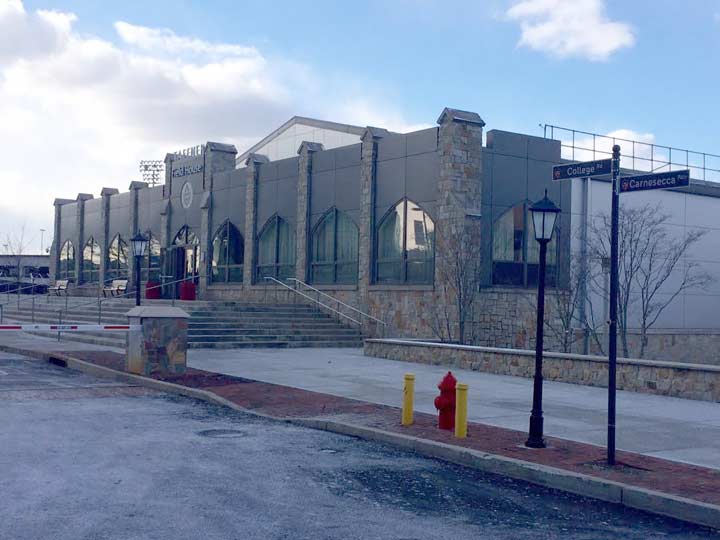
More recent structures on campus continue to follow the Collegiate Gothic tradition, such as Taffner Field House…
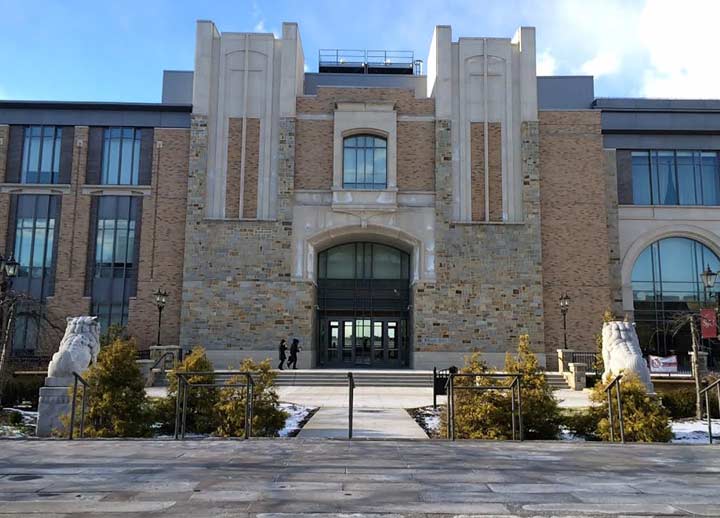
…and D’Angelo Student Center, which opened in 2005 and 2009, respectively.

The campus has its own standard street signage for its roads and paths, installed in 2014 by the firm KMA Design. Among the paths is Loughlin Lane, named for Bishop John Loughlin, who issued the letter in 1866 calling for the creation of St. John’s College.
The most unusual building on the campus is a far contrast from all others, named after the George Washington of China, the legendary Dr. Sun Yat-Sen (1866-1925). It is the oldest Chinese-style structure in Queens, completed on September 8, 1973. Sun led the revolution that in 1911 overthrew the Qing Dynasty and established a republican government, serving as its first president. He is revered by both the Communist government on the mainland and the democratic government on Taiwan.
At the time of the building’s construction, American policy towards China was undergoing a seismic shift as Washington recognized the government in Beijing while downgrading its relations with Taipei. The American public was very interested in learning more about the far east and universities were expanding their programs focusing on this topic.
Eager to maintain ties with its longtime ally, the Taipei government contributed to the construction of Sun Yat-Sen Memorial Hall and its fledgling Asian Studies Program. At its opening, Chen Yu-ching, director of the Department of Overseas Affairs of the Central Committee of the Kuomintang (Nationalist Party) received an honorary doctorate from St. John’s and spoke of his party’s identity as the true heirs to Sun’s legacy. It’s debatable as Sun’s sister-in-law Soong Mei-ling married Nationalist commander Chiang Kai-Shek while his widow Soong Ching-ling sided with the Communists. Inside the hall is the Dr. M. T. Geoffrey Yeh Art Gallery.
One of the mysteries of Sun Yat-Sen Memorial Hall is what happened to its entrance arch, which was removed prior to the construction of D’Angelo Hall. I could not find information anywhere online on its fate.
Another recent addition to the campus is the St. Thomas More Church, completed in 2004 and named after the patron saint of attorneys at law. A modernist church in the round, its octagon shape hearkens to the earlier churches of San Vitale in Ravenna, and the Palatine Chapel in Aachen.

Near the St. Thomas More Church, the Founders Village Townhouses show the Collegiate Gothic style for dormitories. The much larger Residence Village at the campus’ southwestern corner is postmodern and much less decorative in appearance. When it comes to the least decorative structure, that prize goes to the brutalist-inspired Belson Hall, completed in 1972 for the university’s law school. It has all the beauty of a telephone relay station doubling as an atomic bomb shelter. Above the entrance, artwork references the Code of Hammurabi, the Ten Commandments and the Magna Carta.
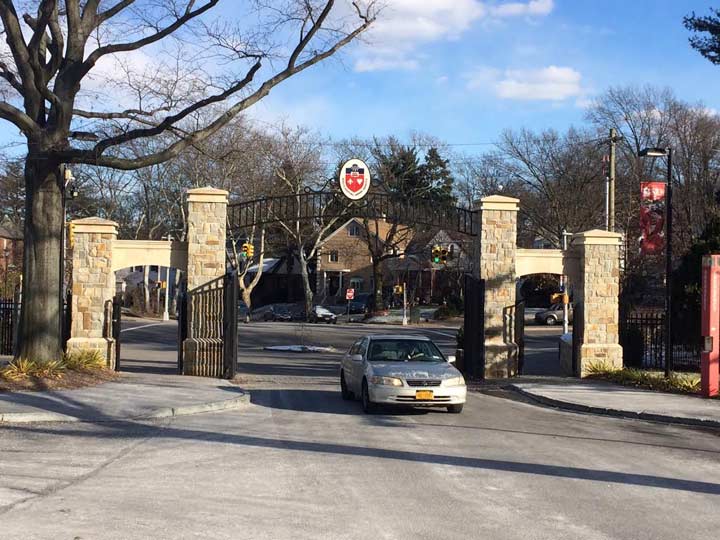
The campus has eight entrances, but only the Main Gate, where University Road intersects with Utopia Parkway and Kildare Road, has a traditional style gateway, which is why it’s known as the Main Gate.
Leaving the campus, it is clear that no remnants of the Hillcrest Golf Club remain. Not the clubhouse, not the water feature, and no fairways, through the lawn in front of St. Augustine Hall is large enough to permit putting. While we are in the neighborhood, there is one more geographic feature to mention, located outside the southeastern corner of the campus, where Utopia Parkway meets Homelawn Street and Grand Central Parkway. It is where the neighborhoods of Hillcrest, Jamaica Estates and Jamaica Hills meet. Prior to 1931, this intersection was the site of Redder’s Pond, one of many glacial kettle ponds atop the terminal moraine.

A popular ice skating site, the pond claimed three fatalities on January 5, 1908, when two local teens, Francis and William Stecher, fell into the ice. Passerby Joseph Tiercey attempted to save the boys but the ice cracked under his weight, resulting in a third death. Although the pond was relatively small at two to three acres, it was 12 feet deep. In 1931, the pond was filled to make way for Grand Central Parkway.
The pond resurfaced in print around 2010 when local historian Carl Ballenas published a book on the history of Jamaica Estates. In the book, a page about the pond retells the story of the tragic 1908 drowning. That same year, the Immaculate Conception School and St. John’s University partnered to install a plaque on a boulder marking the location of the post-glacial pond. As the rock is located in a traffic triangle, it would be ideal to have the site named Redder’s Pond Triangle.
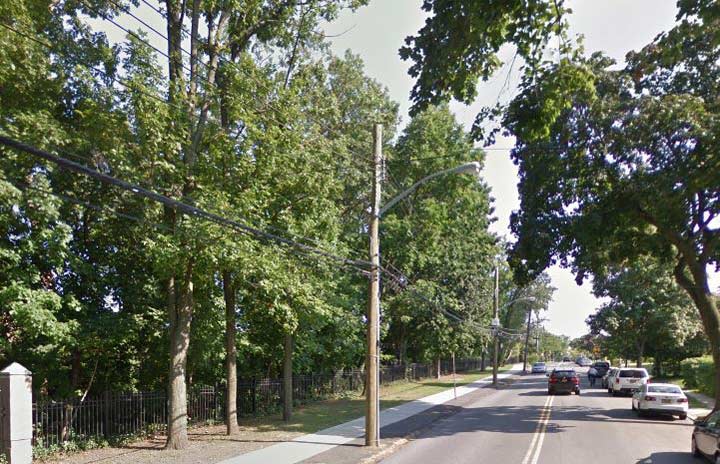
Circling back home along the western border of St. John’s University, the side of 168th Street that faces the campus resembles a countryside lane. As the least developed section of the campus, perhaps this is where it most closely resembles the golf course that preceded it.
Sergey Kadinsky is a proud alumnus of CCNY and an adjunct professor of history at Touro College. That’s the college with many campuses sprinkled across the map. His new book, Hidden Waters of New York City, is now available for pre-order.
1/26/16



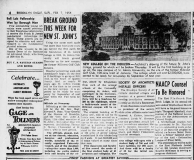

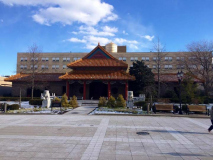
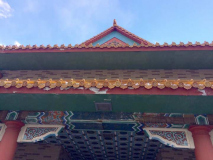
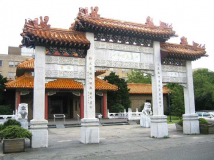
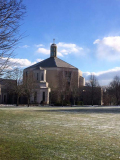
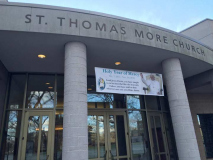
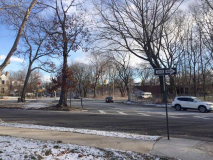
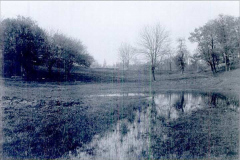
6 comments
I was in the first class to go all the way through at Hillcrest (previous classes started in Brooklyn). It was pretty easy to spot traces of the golf course at that time
I helped build the St. Thomas Moore chapel and the Fieldhouse.
I was told that Babe Ruth was a regular golfer at Hillcrest.
I read that he also golfed at St. Albans, the present-day Roy Wilkins Park.
Could anyone tell me where Curtis Avenue was or is. All I know is that it crossed Metropolitan Avenue. I am told it was in Richmond Hill, My family tree says Newtown, Town of Hempstead and Jamaica. Anyone?
It’s now 124th Street
http://www.stevemorse.org/census/changes/QueensChanges1_CtoD.htm